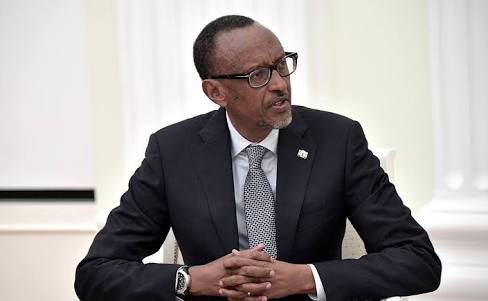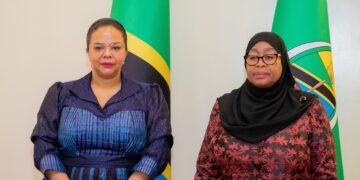Comparatively speaking, the avive seems to be all most the same as what is currently happening in the Post-genocide Rwanda under the leadership of the philosopher King, President Paul Kagame (Former military General) whom Thomas Hobbes would call Leviathan.
The story of the Post-genocide Rwanda is what the Nigerian writer and story teller, feminist Chimamanda Ngozi Adichie would call: A single story. The post-genocide Rwandan story has all along been a single story: A single story of “success” and “miracle” of the political, military and economic wisdom of the philosopher Kin.
It should be noted that a single story does always hide other stories, single story smells bad! The nauseate smell of the single story is more than disgust, it does note open-up a room for other stories, as Ngozi Adichie pointed out in her “The Danger of a Single Story.”
The Nigerian novelist, Adichie, who is the author of several books, including “Half of A Yellow Sun.” A novel that narrate the story of the Biafran War. The novel takes place in Nigeria prior to and during the Nigerian Civil War (1967–70). The effect of the war is shown through the self-motivated relationships of people’s lives without living behind the way the members of the elite class such as politicians, influential businessmen, prominent academics, and former oppressors shape the view or pre and post war zones. The main reason of providing the above summery of Adichie’s “Half Yellow Sun” is: Pre and post war narratives are shaped by powerful forces in the society.
Going back to the title: Apart From President Kagame Leadership’s Successful Single Story: Are They Other Stories that Speak on the Living Conditions of the Majority of Rwandese in Rwanda?
In her TEDx talk titled “The Danger of a Single Story,” among other things Adichie argues that people’s lives and cultures are composed of many overlapping stories. She insists that if one hears only a single story about another person or country, he or she has the highest risk of a critical misunderstanding. She then post a warning: One must be careful with a single story.
Since the Rwandan story seems to be a single story, it looks relevant to provide some few factors and variable that can give birth to other stories from the single story’s woomb.
The story to be born may have existed before, but possibly they may have been killed prematurely by politicians, influential businessmen, prominent academics, and former oppressors, perhaps denied space in the mainstream media houses, research institutions and multinational organization that protect the interests of global capital.
While it is well known that the philosophy ubuntu which among other things oblige people to appreciate the do gooders in the name of humanity, it may not be a sacrilege to accept and appreciating the positive evidences of Kagame’s leadership, and the performance of Rwanda as a post conflict country.
IM and World Bank reports show that Rwanda’s macroeconomic conditions have continued to improve owing to the strong implementation of reforms underlying the authorities’ economic program. Economic activity has gained momentum and was broad-based, inflation remains low, and the economy’s resilience to shocks has been boosted
However, what would be grave, and disturbing is to hide the realities of the living conditions of grass roots Rwandese who supposed to be the legitimate beneficiaries the improvements as mentioned by the IMF and World Bank Reports. But the alarming reality is: only few people at Rwandan’s grass root level speak more of the highly advertised economic growth, infrastructure development, and Rwandan exceptionalism.
The alarming reality is the existence of stories in the periphery that contradict the much appreciated single story.
This peace does not aim at exposing other stories, rather than pointing out some few factors and variable that can ignite new narratives that can provoc an honest conversation that would expose some of the skeletons hidden behind the Rwandan single story:
a. Rwanda is estimated to have 12.63 million population. Out of which only 17% lives in urban areas. But most of reported things happening in Kigali, capital city, a city of 745 261. However, it looks like there’s little interest in finding out the living conditions of grass roots villagers in rural Rwanda.
b. Rwandese are comprised of 3 primary groups: Hutu 84%, Tutsi 15% and Twa 1%. However, the conversation around equal distribution of socio-economic opportunities by focusing at representativity of the groups in private and public sector remains in the periphery. Few are the observers who have argue that the Kigali regime is a Tutsi lead government that de jure reflects equality of all groups, but de facto a Tutsi dominant regime that primarily aimed at catering for the Tutsi first. The single story does not speaks about this claim. Consider as a taboo subject, this claim is mostly muted.
c. After the genocide 1994, the Hutu who are considered genocidaires did run to neighboring countries, the majority are in DRC. It is estimated that they are all most 1 million. But reports show that the few who decided to go back to Rwanda did not receive the welcomed mood, some of them were killed according to some reports.
As a result the remaining behind do longer want to go. In his book titled “Ainsi sonne le glas : Les derniers jours du maréchal Mobutu”, a book that narrate the last days of president Mobutu and the complexity of the great lakes zone wars and genocide in Rwanda, Honoré N’Gbanda confirms that during the genenocide there was more than 2 million Hutu Rwandese who crossed the border to the DRC. Currently, no any report that shows a genuine, interest of the current regime in Kigali requesting the returning of Hutus refugees who are in DRC, and other part of the world.
d. Rwanda enjoys exceptional relation with donors because of the guilt regarding their inaction during the genocide. In his article titled “The Rwandan Regime Continues to Receive Billions of US Dollars in Aid While Ordinary People in Rwanda and Congo Remain in Misery” Ann Garrison provides statistics that contradict the popular single story of Rwanda as the most successful African nation. He exposes that Rwanda received roughly “US$1.22 billion” in development aid in 2016-2017. In the same period, the US was Rwanda’s top bilateral donor, donated US$177.6 million.
Using Dambisa Moyo’s convictions in her, “Dead Aid: Why Aid Is Not Working and How There Is a Better Way for Africa” an hypothesis can be developed: Since Rwanda is a beneficiary of huge amount of foreign aid, the single story of success can be contested, on the basis, successful nations have the reputation of note relaying on aids in order to respond to the need of the poorest of the poors, at grass root level.
e. Last August Tom Wilson and David Blood of Financial Times did realesed a surprised article. An article that contradict the single story. Titled, “Rwanda: Where Even Poverty Data Must Toe Kagame’s Line,” article’s data contradicts World Bank and National Institute of Statistics of Rwanda’s reports. The article argues that Kigali administration has manipulated its economic data to hide its global ranking poverty.
The authors succeeded to analysise 14,000 data, as well as interviews with academics. Their findings show that the skyrocketing prices for Rwandan families have led to an increase in poverty between 2010 and 2014. Both the World Bank and Rwanda have rejected the Financial Times’s accusations. But some ranking agencies and academic cycles support the report, they argue that it comes to confirm the deep report done by France24 back in 2015.
The BBC spoke to Rwandan-Canadian economist David Himbara, who said that when he was a minister in the Rwandan government, President Paul Kagame would give his cabinet officials orders as to the statistics he wanted them to report.
This paper does not have the authority to judge which data are legitimate and objective, but what it unequivocally submits is the single story may not necessary reflects the aspirations and the daily lives of most of the people in Rwanda.
f. It can be said that the popular single story does not speak on the issues of food security objectively, it hides other domestic realities. In mid 2016 Edmund Kagire of the East African Magazine has reported that close to 100,000 families mainly in the Eastern Province districts of Rwamagana, Nyagatare, Bugesera, Kayonza and Kirehe as well as Nyanza and Gisagara districts in Southern Province of Rwanda were facing a threat of hunger if nothing is to be done to avert it.
Appearing on a local radio station, the chairperson of Transparency International Rwanda Chapter, Marie Immaculee Ingabire, blamed the hunger threat on poor planning, policy and decision making especially on the side of local government officials. Famine is not a good story in a country that is considered successful with a winning leadership.
If all the above statistics and reports are objectively correct, it sounds relevant to suggest that the failure or success of Rwanda should be defined and popularized by the Rwandan grass root masses. They are the legitimate barometers that can objectively appreciate their leadership and socio-economic development of their country. The city of Kigali can be the cleanest and greenest city in Africa and perhaps the first in the world, Rwandan economy can be the fastest growing economy with huge investment from the west, but if the masses are not benefiting from the beauty and grass planted along the city of Kigala then the single story hides a forest.
“Always bear in mind that the people are not fighting for ideas, for the things in anyone’s head. They are fighting to win material benefits, to live better and in peace, to see their lives go forward, to guarantee the future of their children. . .”
― Amilcar Cabral
Feruzi Ngwamba Foze

































































